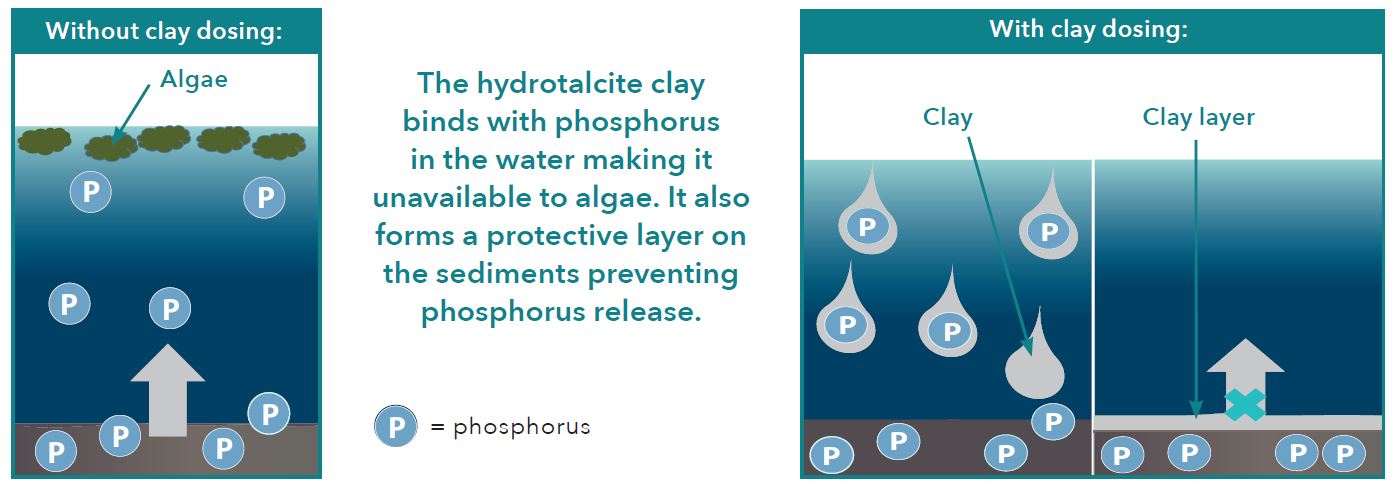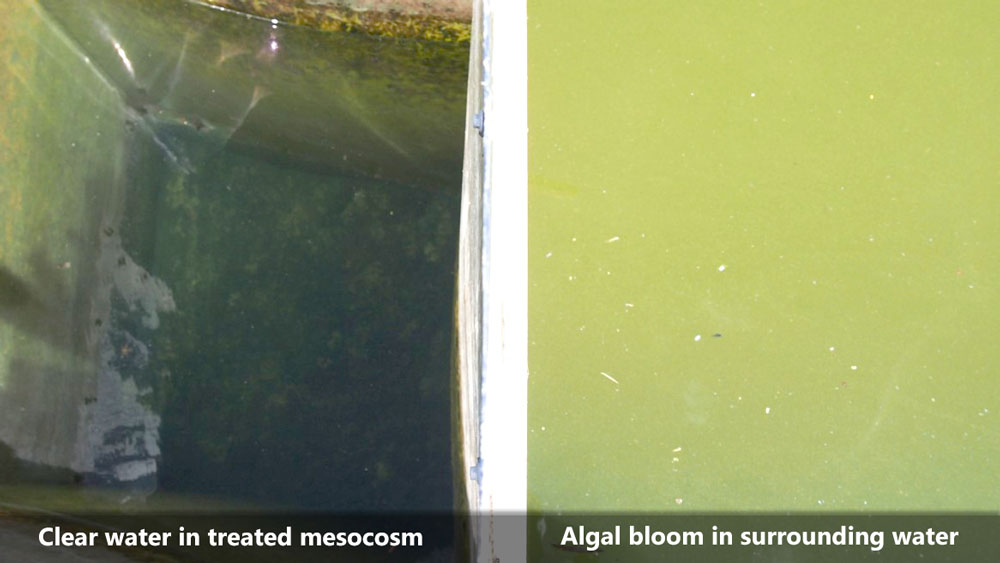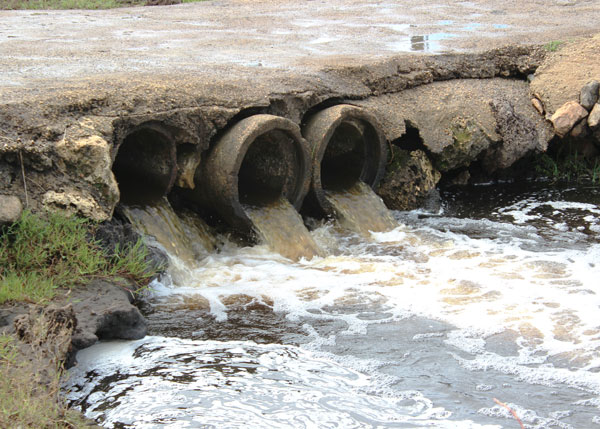New technologies – Phosphorus-binding clay trials
The Department of Water and Environmental Regulation will be conducting a water treatment trial at Cox Bay North Lake between February and May 2024.
We are investigating the effectiveness of a newly developed clay. From 2016 to 2020 we trialed the clay at three sites, Punrak Drain, the lower Serpentine River and the Lower Vasse River.
The Serpentine River, which flows into the Peel-Harvey Estuary and the Lower Vasse River that meanders through the town-centre of Busselton and flows into the Vasse-Wonnerup Estuary, carry high levels of nutrients.
The trials being undertaken in the Lower Vasse River are also part of Revitalising Geographe Waterways.
How does the clay work?

The clay being trialled consists of a naturally occurring clay that is modified with a mineral coating that binds phosphorus.
It reduces algal growth by removing phosphorus in the water while making it unavailable to algae. It also forms a protective layer on the sediments, preventing phosphorus release.
The trials provide information to help with further research and clay development, including:
- improving the clay manufacturing process;
- best application rates for different environments; and
- undertaking a detailed risk assessment for large-scale clay application.
We hope to demonstrate the benefits of the clay for drain treatment in the Peel-Harvey catchment and treatment of standing water bodies such as the Lower Vasse River to enable a widespread application.
Punrak Drain trial
In October 2017, the clay was trialled at Punrak Drain.
It was the first time that the clay was applied at such a large scale in a fast flowing agricultural drain.
Over 500 kilograms of the clay was applied into the flowing water over five hours. The water was monitored for phosphorus and other water quality indicators such as turbidity, nitrogen, pH, suspended solid content or dissolved oxygen before, during and after the application.
The results of this trial will help us understand best application rates, efficiency of treatment, how the clay moves through the drain and where it settles.
Results of the trial are now available.
Lower Vasse River trials
As part of the Revitalising Geographe Waterways, a trial on the Lower Vasse River during the summer of 2016-2017 showed promising results.
Fifteen large bottomless tanks, or mesocosms were placed in the river near the Lower Vasse traffic bridge. The clay-treated mesocosms showed reduced algae growth and improved water quality. This was evident both visually and when tested for algal growth indicators.
The next large-scale trial using the newly developed clay took place in the Lower Vasse River over the summer of 2017-2018. View media statement here.
The clay was applied to two 15 by 30 metre areas where different application times and amounts were tested.
Results of both trials are now available.




